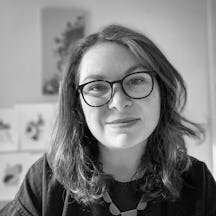The babies affected by thalidomide in the early 1960s have grown up. With a wealth of experience behind them, they reflect on the value of humour, becoming parents, and the legacy of the thalidomide scandal.
Thalidomide survivors in the 21st century
Words by Ruth Blueartwork by Hollie Chastainaverage reading time 5 minutes
- Serial
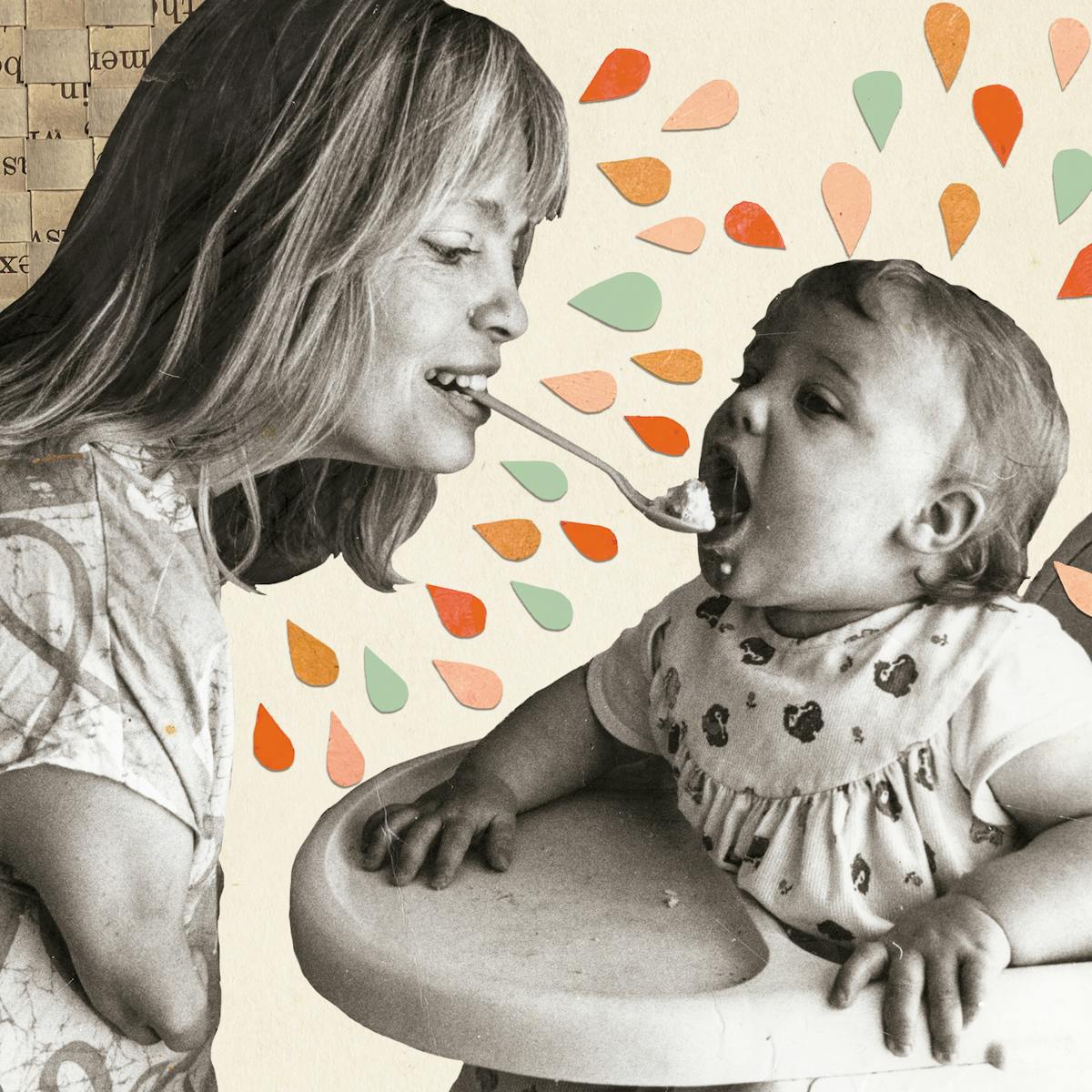
There are 450 known living survivors of the thalidomide catastrophe in the UK. Now heading into their 60s, they face new challenges with increased levels of pain and reduced mobility; overuse of key muscles and joints has led to premature ageing of their bodies.
Looking back over the past 60 years, they reflect on adapting to parenthood themselves, the importance of maintaining a sense of humour, and their feelings about Chemie Grünenthal, the West German drug company behind thalidomide.
Adapting to parenthood
Like many milestones in thalidomiders’ lives, becoming a parent was rarely straightforward. Many were encouraged not to have children, primarily because there were unfounded fears that the effect of thalidomide might be passed on to offspring. It was also thought that their impairments would be an obstacle to safe and effective childcare.
For many, particularly those with upper- and lower-limb impairments, this meant finding innovative ways to look after their children. Ed used his teeth: “I used to carry both babies with their Babygros on. I’d bite the front of their Babygro and just lift them up with my teeth and carry them around, supporting their heads, obviously. They were fine, right as rain.”

Kath, like many wheelchair users, found a way to be able to take her baby out for a walk.
As their parents or those who raised them had done in the past, thalidomiders adapted their environment. When Kath had her first child and a nurse at the hospital questioned how on earth she might be able to manage at home, Kath pointed out: “I’m not this disabled at home. Everything in this room disables me: the sinks are high, the beds are high, I can’t get my baby out of the cot because the cot’s high. When I’m at home everything’s at my height; I’m not disabled.”
Many new mothers, despite wishing to maintain their hard-won independence, discovered that, often for the first time, they needed to ask for help, as Simone found out when her child became more mobile. Following one particular incident when her toddler ran off, Simone got home and telephoned social services in tears to say, “Look, I need some help.”
Simone.
Facing life with humour and positivity
Thalidomide survivors have always used humour as a vital tool to overcome some of the more difficult aspects of their lives. They have an acute awareness of the absurdity of situations they have found themselves in, especially when it comes to using prostheses.
Wendy has had great fun with her legs over the years. As a young woman, she used her hollow lower-limb prostheses to hide her cigarettes. She recalls she would, “Sit at the back of the minibus, drop my leg and take my fags out, because I used to wrap them in a plastic bag and hide them in my leg!” Her mum, smelling cigarettes, riffled through her bag, but never thought to look inside her legs.
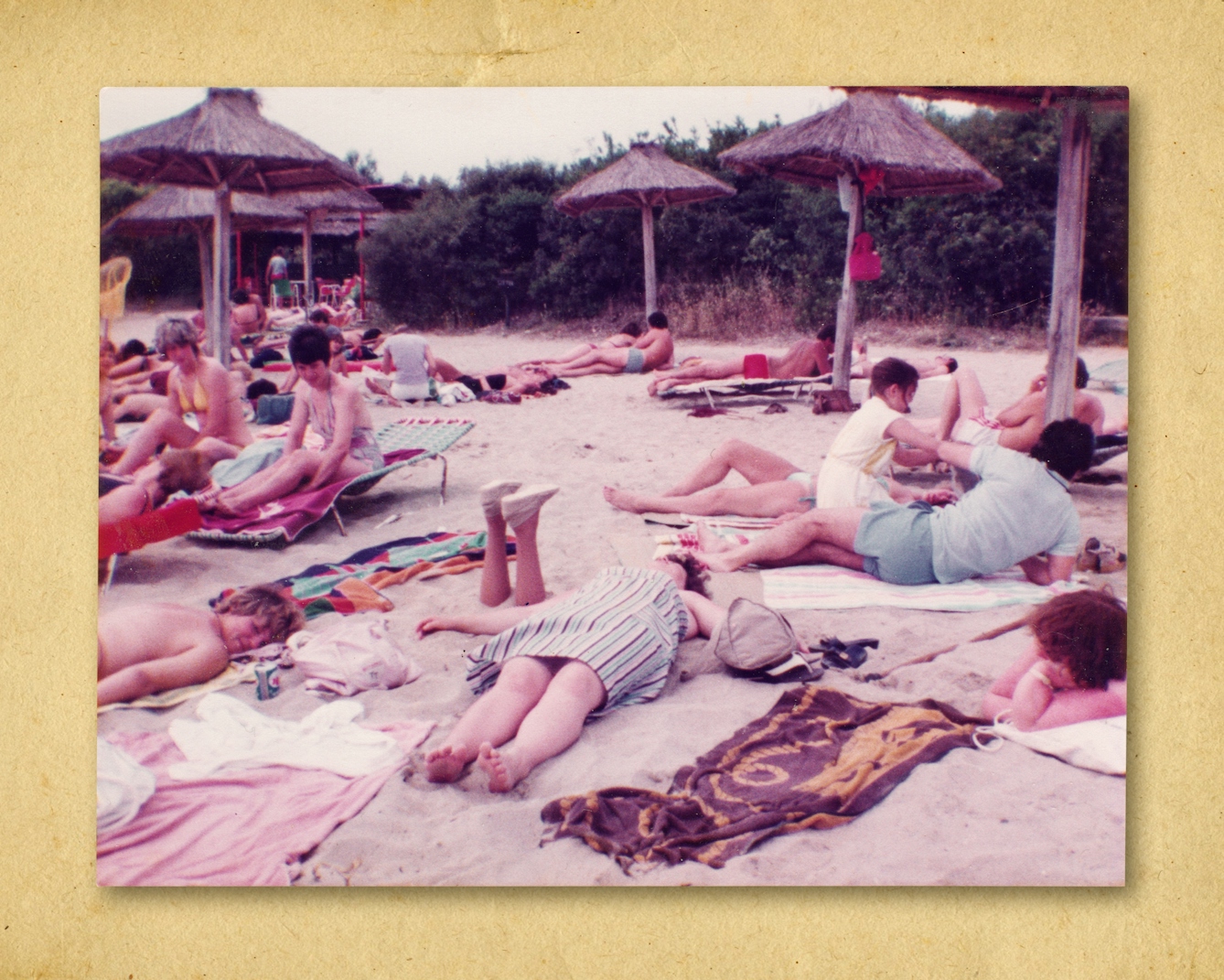
Wendy has spent a lifetime playing tricks on people with her artificial legs.
Dave still enjoys making up stories when people realise that he wears a lower-limb prosthetic. He says, “When I’m away on holiday, I just lie through my teeth about how I’ve got my leg – you adapt to the circumstances. I had this German tourist come up to me, look at my leg absolutely horrified, and say, ‘How did you get that?’
“‘Well, I was attacked by a lion last year and I’m coming back to face my fears,’” so, you know, I like freaking people out!”
Using humour is an important form of agency, particularly so for survivors, who as children were forced to wear prostheses to appear “normal” and as a way of dealing with a lifetime of being stared at. So when Katrina offers her prosthetic arms, literally, to someone who asks her for a hand or David pops his artificial eye out on the bus to the horror of the other passengers, this is more than a prank.
Mikey.
One of the positive legacies of thalidomide has been to make disability more visible. Since childhood, when their parents fought for justice, thalidomiders have featured frequently in the media. Campaigning continues and brings rewards. For Mikey, being part of a thalidomide campaign team and a thalidomide survivor has given her new experiences and taken her to places that otherwise she may not have seen.
Reflections on Chemie Grünenthal
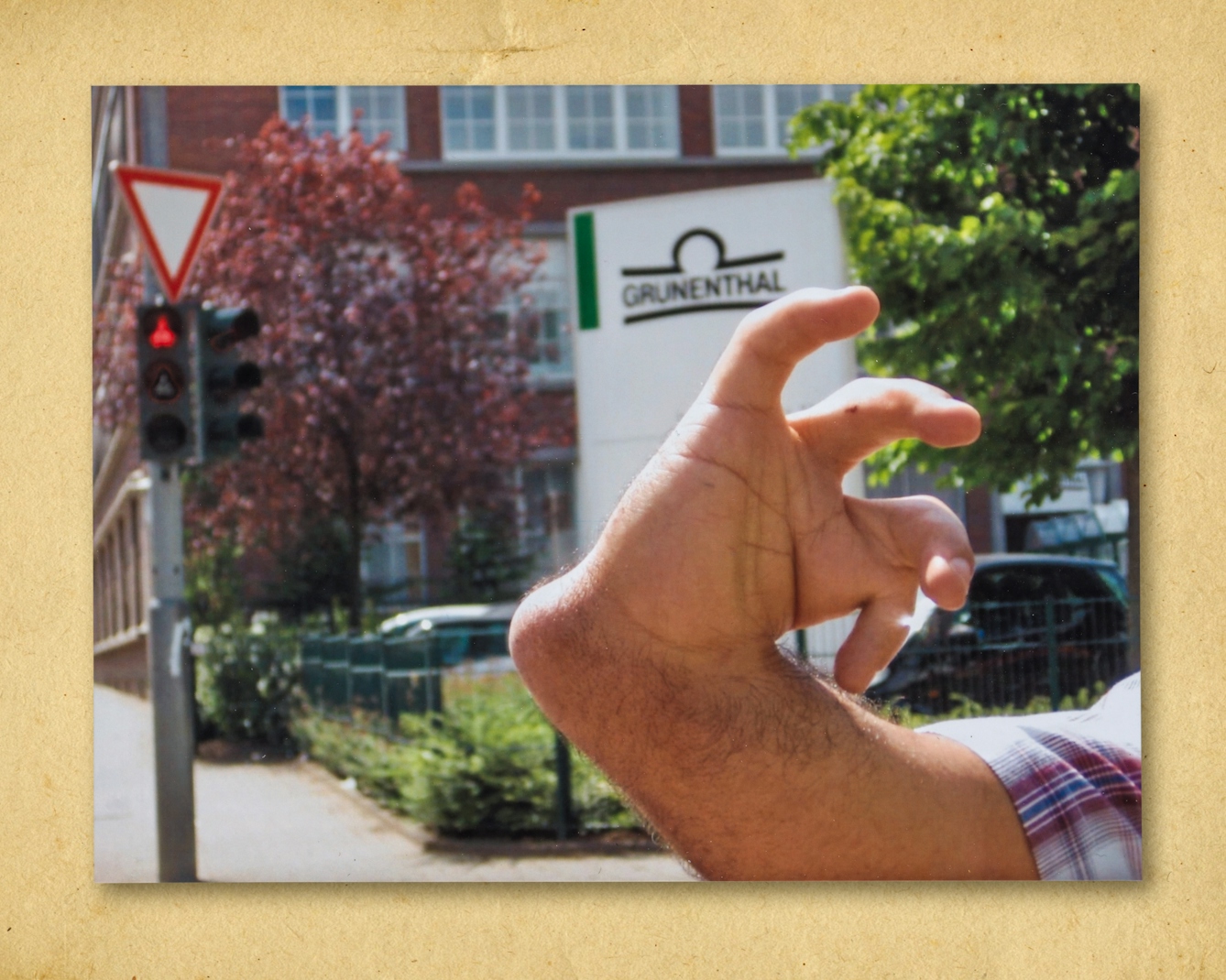
German-born thalidomide survivor Fred’s hand outside the headquarters of Grünenthal.
Emotions run high when thalidomiders reflect on Grünenthal, the company that produced thalidomide in the 1950s. In 2012 the chief executive of the company unveiled a statue representing a thalidomide survivor in Stolberg, Germany, along with an “apology” for the first time. The apology was dismissed by the thalidomide community worldwide, primarily because Grünenthal has still not properly admitted liability and compensation claims are still outstanding. This is unforgiveable, as Sukeshi describes so powerfully:
Sukeshi.
In contrast, in 2016, three members of the UK thalidomide community, Ed Freeman, Rosaleen Moriarty-Simmonds and Stephen Simmonds, secured a site for a permanent Thalidomide Memorial, in Cardiff, to commemorate those who have died. This memorial is a testament to the empathy survivors have for each other and their recognition of the value of each and every life affected by thalidomide. It puts the cold half-hearted “apology” from Grünenthal to shame.
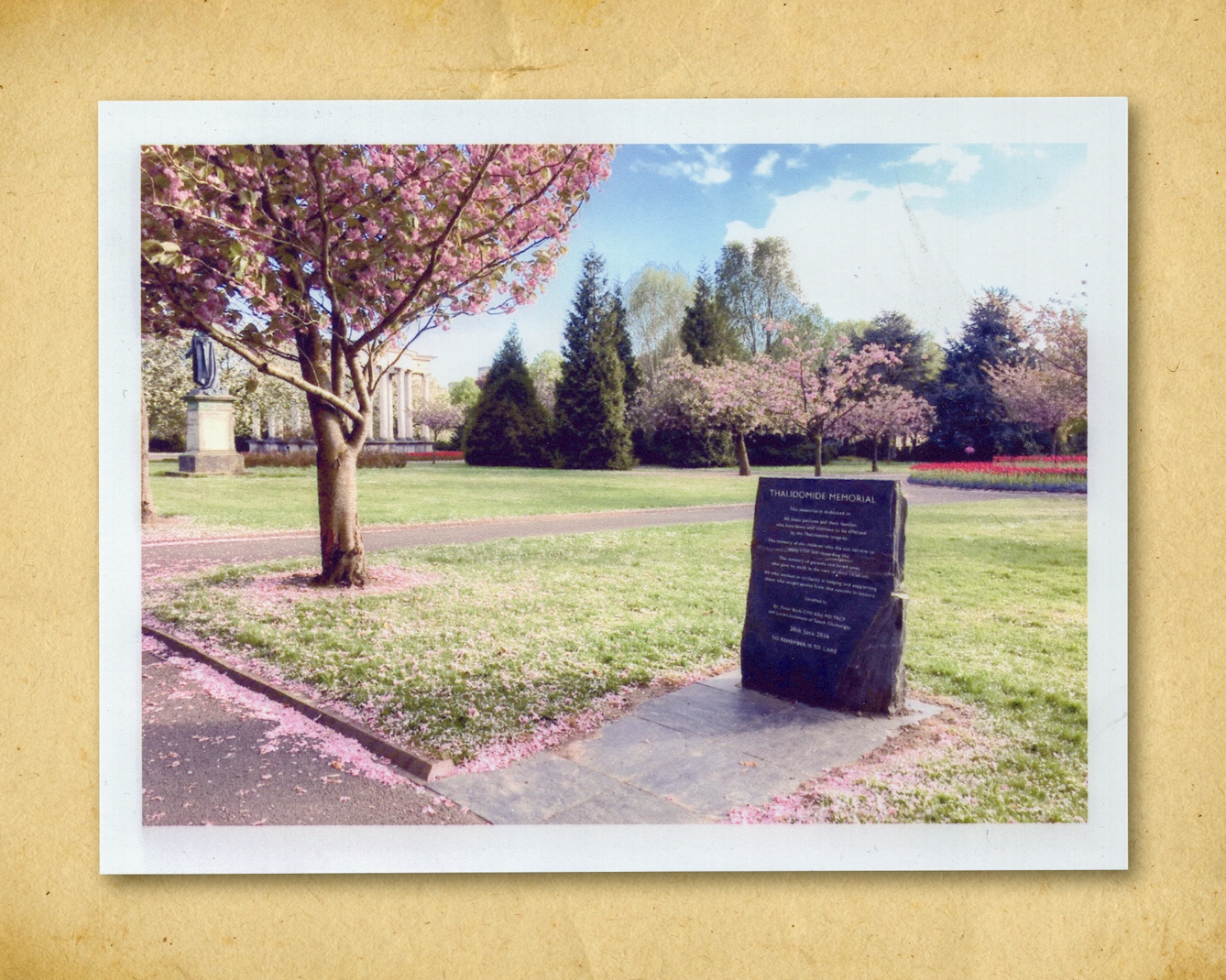
The Thalidomide Memorial in Cardiff.
The legacies of thalidomide
There are many legacies of thalidomide. From the early campaigning by the parents and media coverage, to the continued work of campaign teams, the thalidomide catastrophe has paved the way for others seeking justice, especially for medical and pharmaceutical negligence and malpractice.
It was also a catalyst for changes in drug testing and prescription policies, particularly with regard to drugs given to pregnant women.
Thalidomiders themselves are keen to be heard and to make a difference, and not always through campaigning and the media but also in everyday life, sharing humour and mutual support. As Kath says, “It’s your surroundings that disable you because they’re not built for you.”
By taking control, adapting those surroundings, and showing people how things could be different, thalidomide survivors help the rest of the world get used to the fact that not everyone is born with the same body.
About the contributors
Ruth Blue
Dr Ruth Blue is a freelance writer, researcher and oral historian with a PhD in fine art from the Slade School of Fine Art. She worked for Wellcome for 17 years, where she began working with thalidomide survivors in 2013, collecting their stories, photographs and artefacts. She has continued this work for the Thalidomide Society.
Hollie Chastain
Hollie Chastain is a mixed-media artist and award-winning illustrator living and working in Chattanooga, Tennessee. Coming from both a graphic-design and studio-art background, her work has a storytelling quality, mixing found material, strong graphic elements and modern palettes. Along with gallery work, she has illustrated work for Smithsonian Magazine, Warner Music and the Oxford American, among others, and authored and illustrated a book published in 2017. She currently works from a home studio with her husband Eric, two children, two cats and two dogs.

